Beijing stands as the radiant capital city of China, and its charming flavors of ancient traditions are intertwined with modern innovations, making it a sight for sore eyes. From towering historical monuments laden with history to contemporary wonders, Beijing exhibits an exceptional fusion of heritage and innovation. This blog post will explain ten attractions and each site’s in-depth history, importance, and distinctive beauty. If you are fascinated by the secrets of the Forbidden City, wish to walk the magnificent Great Wall, or are ready to discover the local life. This guide gives you the details you need to appreciate all Beijing offers. Prepare to witness the splendor and glory that make this capital a phenomenal destination for tourists’ top choices.
What are the must-visit historical sites in Beijing?
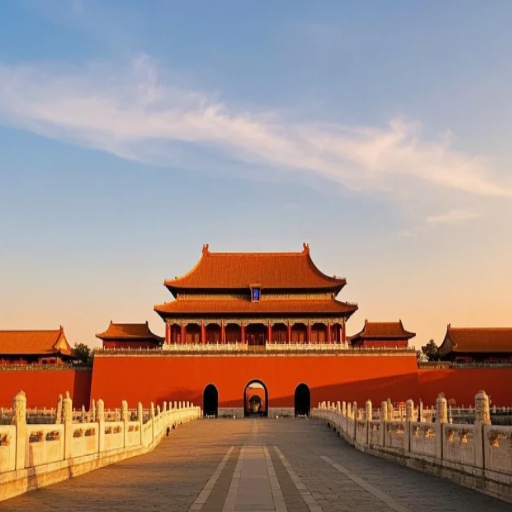
What are the must-visit historical sites in Beijing
The Forbidden City
Also known as the Palace Museum, the Forbidden City remains the world’s largest ancient palatial structure. Once home to the 24 Emperors of the Qin and Ming Dynasties, its vast courtyards, intricate, stunning halls, and architectural style quickly convey their status.
The Great Wall of China
This popular tourist attraction reached Beijing’s border around the third century BC. Like a dragon hiding among mountains, the wall does a fantastic job blending into nature. Visit popular sites such as Badaling or Mutianyu to witness the stunning architecture from centuries back.
The Temple of Heaven
Not far from Summer Palace, The Temple of Heaven proudly displays a distinct design due to its influence from the Ming dynasty, exemplifying the beauty of ancient China. Along with these stunning visuals, the majestic temple offers a serene environment.
The Summer Palace
Famous for its exquisitely designed parks, peaceful pavilions, serene lakes, relaxing gardens, and stunningly built halls, the palace lives up to its name. In contrast to traditional Chinese construction, the Palace takes a modern architectural approach along with the natural landscape.
Tiananmen Square
Tourists must visit Tiananmen Square, one of the largest public squares in China. Historical landmarks such as the National Museum of China and the Mausoleum of Mao offer immense cultural significance to China. Being surrounded by these sites makes it easy to see why this square is the heart of ancient Chinese history.
How can I explore the Forbidden City’s imperial grandeur?
To take in the full magnitude of the imperial beauty of the Forbidden City, buying your ticket from their page beforehand is crucial, as there is a daily visitor limit, which is currently boosted to 30000 to help manage the flow of tourists. Arriving early allows one to enjoy the staggering minute details of the architectural marvels before the crowd arrives, as well as aiding in avoiding peak times. Prepare a map of your movement to incorporate places such as Meridian Gate, Hall of Supreme Harmony, and Imperial Garden. It is recommended to use either an audio guide or a local guide to explain the details behind each landmark to better appreciate the art’s history and culture. The palace is over 180 acres wide, making it essential to wear comfortable shoes during the off-peak season when the weather is cold and the crowds are more tolerable. When visiting during off-peak times, the experience is more enjoyable, and the weather is significantly cooler in late autumn.
What makes the Temple of Heaven a UNESCO World Heritage Site?
In addition to being more appreciated for its multi-dimensional purposes, The Temple of Heaven has been a UNESCO World Heritage site since 1998. This complex, constructed at the start of the 15th century in the Ming dynasty, was designated as a temple for the periods when the emperors asked for prayers for good harvests. The design contains heavy aspects of nature and earth, considering the circular forms are dominated by the heavens while the square bases of the designs represent the Earth.
Comprising the Hall of Prayer for Good Harvests, which is entirely built from wood and without a single nail, the Circular Mound Altar, meant for sound amplification and harmony between heaven and earth, helps outline some of the most prominent architectural features. The temple also exhibits alignment with ancient Chinese cosmology and feng shui. The temple covers the most ground, 267 hectares, of sacrificial temples in the region, which makes it the largest in China and explains its grandeur and spiritual aspirations in construction.
The Temple of Heaven’s Temple is of great aesthetic and historical value. Thanks to its rich cultural heritage, it is an enduring focal point of reverence and respect. The temple is recognized worldwide for sustaining imperial ritual traditions quintessential to China.
Why is Tiananmen Square considered the heart of Beijing?
Due to its significant historical, political, and cultural relevance, Tiananmen Square is considered the heart of Beijing. Stretching over 109 acres, one of the largest city squares globally, it stands as a monument to the might and authority of China’s central government. The square forms an integral part of historical events; most remarkably, the founding ceremony of the People’s Republic of China in 1949 cemented its identity in the nation’s history. Its location right in the middle of monumental buildings like the Tiananmen Gate, the Great Hall of the People, and the Mausoleum of Mao Zedong marks it as the symbolic and physical heart of the capital city and the administrative seat of China. This gigantic square, approximately 880 x 500 meters, fully reflects the nation’s rich historical values and modern-day importance. It is also used for state ceremonies, military parades, and other important gatherings.
How can I experience the Great Wall of China from Beijing?
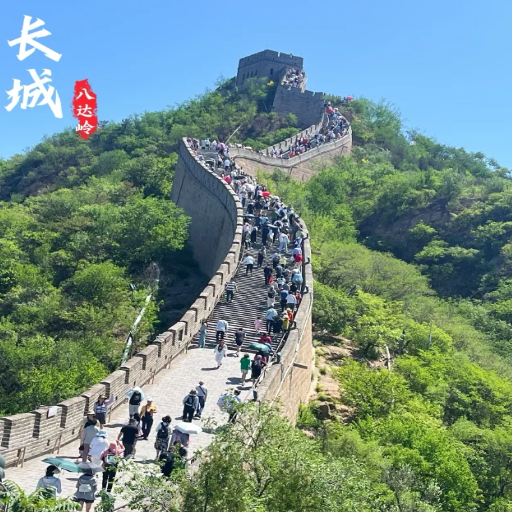
How can I experience the Great Wall of China from Beijing
Taking a side trip to the Great Wall of China from Beijing is easily achievable and full of adventure. Numerous sections of the Wall can be conveniently reached through a short drive. Along with Mutianyu and Badaling, these areas are popular amongst tourists because of their easy access and beautiful views. These segments can be reached through guided excursions, private vehicles, and public transportation. While Mutianyu is famous for having restored walls with lower visitation rates, Badaling is well-equipped and historically informative, which makes it suitable for first-time visitors. If you’re looking for a more complete undertaking, consider venturing to Jinshanling and Simatai to enjoy a less crowded yet beautiful landscape. Remember to plan accordingly and at ease, and prepare for an effortless amount of walking, which includes varying degrees of flat ground.
Which section of the Great Wall is best for first-time visitors?
First-time travelers are often advised to zoom in on the Badaling section as it is the most easily accessible and in reasonably good condition. Specific aspects include:
- Accessibility: Trains and buses run to it, which is conveniently accessible by car. Tourists most enjoy this section.
- Facilities: Visitor centers, easy-to-use handrails, wheelchair access, and other welcoming signage.
- Restoration Level: This extensively restored site ensures easy traversing for those interested in the historical background without having to exert too much effort physically.
- Crowd Levels: Expect a more extensive crowd as popularity increases during peak seasons. To enhance your experience, try visiting during the early morning hours.
The area boasts beautiful scenery and rich historical significance, making Badaling an excellent starting point for exploring the Great Wall.
What’s the significance of the Ming Dynasty in Great Wall history?
The Ming Dynasty (1368–1644) was essential to constructing the Great Wall in a recognizable form today. The wall was a military defense structure during the Ming period, and extensive renovations were undertaken to transform it into a formidable military structure. Whereas earlier forms of the wall were constructed using tamped earth, the Ming utilized bricks, stones, and tiles, making the wall significantly more durable and defensible. The wall extended over 5,500 miles and was completed with watchtowers, beacon towers, troop barracks, and fortifications that acted as the first defense line against northern invasions, mostly from Mongols. Advanced Ming designs, such as crenelated parapets and complex signaling systems, were used. This iteration of the Great Wall represented military advancement and the empire’s resource mobilization and engineering prowess.
Are there any overnight Great Wall tours from Beijing?
Definitely! There are overnight Great Wall tours starting from Beijing. These tours often zero in on the less popular wall parts, like Simatai, Gubeikou, and Jinshanling, as these sections are not as crowded. Many packages have night hiking, walking along the walls, and sleeping in a guest house by the wall. You should expect to be in some physical shape, as the hikes can be anywhere from 4 to 10 miles long, depending on the tour length. Most operators give transportation, food, and guidance, with average prices ranging from $150 to $300 per person, depending on group size and added services. Check the weather before camping and pack the necessary gear, such as hiking equipment and flashlights, if you plan camping.
What are the top cultural attractions in Beijing?
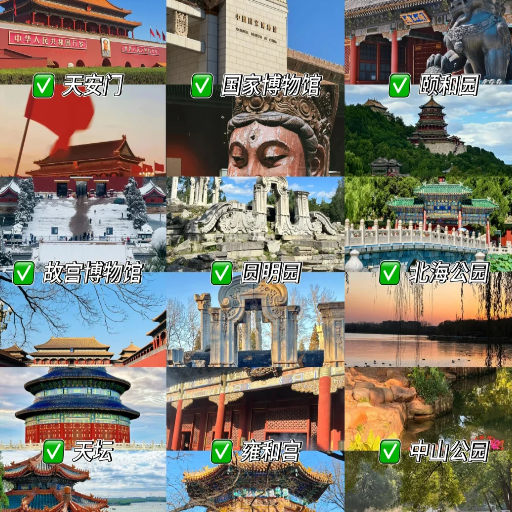
What are the top cultural attractions in Beijing
Beijing is a city with a rich history and culture. It has several attractions that should be seen. A “must visit” for any tourist is The Forbidden City, which has a vast collection of buildings with pieces of imperial architecture and other important artifacts from when China had emperors. The Temple of Heaven represents harmony and spirituality in Chinese culture. Aside from containing beautiful gardens, the Summer Palace has gorgeous lakes that add to its charm. The old hutongs, the traditional alleyways of Beijing, let you experience what it was like in ancient times. On top of the above, the National Museum of China and Beijing Opera offer much information concerning the city’s art and culture.
How does the Lama Temple showcase Tibetan Buddhism in Beijing?
Lama Temple is also known as Yonghe Temple. This temple is one of Beijing’s most important centers of Tibetan Buddhism. It holds significant collections of religious statues, mandalas, and scriptures. Also, the intricate architecture, statue collections, and Han Chinese and Tibetan styles make it a cultured site. One of the most iconic features of this temple includes an 18-meter tall sandalwood statue of Maitreya Buddha and the Hall of Harmony and Peace. The setting also contains numerous stunning artworks, prayer wheels, intricate Tibetan pieces, and a UNESCO-listed artifact that makes this sight one of a kind. Besides enabling the above, the temple also hosts and encourages Buddhist ceremonies, meditation sessions, teachings, and visions to keep Tibetan Buddhism alive in the city.
What can I learn about Chinese art at the National Museum of China?
The National Museum of China offers an in-depth understanding of the development and variety of Chinese art over the years. Along with masterpieces of art, the museum also houses precious historical collections of classic Chinese paintings, calligraphy, bronze artifacts, jade carvings, and ancient pottery. Gallery Highlights feature the bronze ding (cauldrons) dating back to the Shang and Zhou Dynasties and the painted Yangshao Pottery from the Neolithic Era. Famous Shan Shui (mountain-water) landscape paintings from Qi Baishi and Zhang Daqian also come from traditional Chinese painting styles highlighted by the museum. Other famous scrolls emphasize and display the beauty and culture of the many penmanship styles, such as regular, clerical, and seal scripts. Along with art lovers, the museum seeks to educate modern audiences and children through interactive technology in exhibits.
Why should I visit a traditional Beijing hutong neighborhood?
Exploring a historical Beijing Hutong district feels like taking a trip back in time to the city’s vibrant past. These alleys and the adjacent courtyards preserve the local way of life and offer unmatched insight into the stunning buildings and community that characterize ancient Beijing. Strolling through a hutong allows me to marvel at the beautiful siheyuan houses, enjoy incredible street food, and interact with cheerful residents. Many hutongs were built during the Yuan, Ming, or Qing dynasties, illustrating the basic yet effective style of urban design that features 6 to 9-meter wide streets. Thus, hutongs serve as a living legacy of Beijing.
What are some unique experiences for tourists in Beijing?
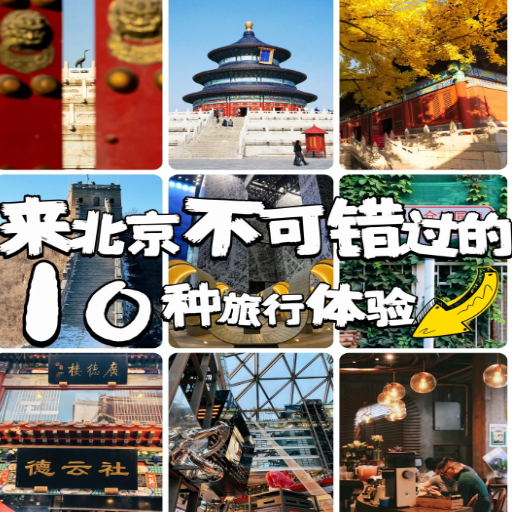
What are some unique experiences for tourists in Beijing
Visitors to Beijing can participate in fantastic activities, such as excursions to the ancient Forbidden City, walking along the Great Wall, and marveling at the intricate Temple of Heaven. Tourists can enjoy quiet afternoons at the Summer Palace or vibrant evenings shopping and indulging in street food at Wangfujing Street. For a deeper understanding of Chinese culture, travelers can witness traditional Peking opera performances and engage in calligraphy and tea-making workshops in China’s history.
How can I explore Beijing’s vibrant night markets?
Beijing’s vibrant night markets are a must-visit if one is curious about the city’s local culture and prosperous life. Visit famous spots like Wangfujing Snack Street or Donghuamen Night Market, which serves traditional meals and street snacks. Make sure to visit during the evening (between six and eleven) for the whole experience. Most vendors don’t take credit cards, so cash or mobile payments via WeChat Pay or Alipay are recommended. Don’t forget comfortable walking shoes, basic knowledge of bargaining, a friendly attitude, and a lavish experience await at every corner.
What thrills await at Universal Studios Beijing?
Universal Studios Beijing is a fantastic destination ready to offer guests an unprecedented blend of entertaining rides, stunning attractions, and other entertainment experiences of a lifetime. It occupies a massive 2 square kilometers and comprises seven themed zones: Hollywood, Jurassic World Isla Nublar, Minion Land, Kung Fu Panda Land of Awesomeness, and The Wizarding World of Harry Potter. Each zone is intricately constructed to enable guests to enter the universes of well-known movies and franchises.
One of the highlights is the Jurassic World Adventure ride, the latest in dark rides. It is accompanied by animatronics and motion simulation and takes the guest on an adventure through a world of dinosaurs. Other “must-visits” include Decepticoaster, located in the Transformers Metrobase region, a high-speed roller coaster with twists, turns, and drops representing a battle of Decepticons.
For Harry Potter fans, rides in The Wizarding World of Harry Potter include Harry Potter and the Forbidden Journey, which utilizes projection mapping in combination with robotics, Ollivander’s Wand Shop, and Butterbeer. Another family-friendly spot is Minion Land, where the Despicable Me Minion Mayhem 4D simulator ride entertains everyone regardless of age.
Certain rides have age limitations from 100 cm to 130 cm, which ensures safety while still providing delicious rides. The park uses the Universal Studios app for line queuing, which offers real-time wait time tracking and Express Passes for easier ride access.
Don’t miss the live shows and daily parades featuring energetic performances and cherished characters. Due to its outstanding detail, Universal Studios Beijing is a worldwide wonder that offers world-class entertainment and thrills for all ages.
Are there any off-the-beaten-path attractions in old Beijing?
The Old Beijing Area is rich with unexplored gems worth checking out. One is the hutongs, meaning “narrow alleys” filled with traditional courtyard residences. They often conceal quaint cafes, boutique stores, and smallish museums like the Shijia Hutong Museum that capture the history and culture of the region. Other places of interest include the Bell and Drum Towers, which have an impressive view of the city and offer a glimpse of the timekeeping traditions of Beijing. If you crave a more zen experience, go to the peaceful Fayuan Temple, one of Beijing’s oldest Buddhist temples with incredible old architecture and beautiful gardens. Most, if not all, of these sights can be conveniently reached through the Beijing subway system or by renting a shared bike, which helps immerse you in the culture.
How should I plan my trip to see Beijing’s top attractions?
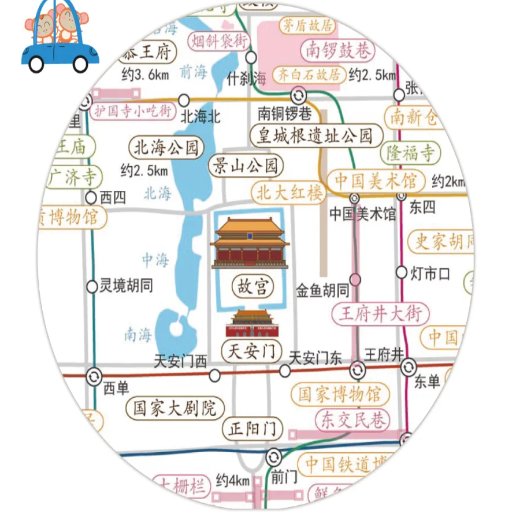
How should I plan my trip to see Beijing’s top attractions
While organizing your trip to see Beijing’s attractions, create an itinerary based on your interests and the proximity of the sites. Set aside particular days for places like the Forbidden City and Tiananmen Square, plus nearby sights like Jingshan Park. Dedicate an additional day to the hutongs, Bell and Drum Towers, and Fayuan Temple if you want a taste of history and culture. Travel using the convenient Beijing subway and consider obtaining a local map app for more straightforward navigation—schedule visits during off-peak hours to minimize crowds and maximize your experience if time allows.
What’s the ideal duration for a comprehensive Beijing sightseeing tour?
On average, a complete Beijing sightseeing tour will require 4-6 days, depending on how quickly or slowly you want to go. That said, here’s my suggested outline for the breakdown:
- Day 1-2: The central landmarks to visit are the Forbidden City, Tiananmen Square, and Jingshan Park. Then, visit Wangfujing Street to go shopping or dining.
- Day 3: This day can be reserved for visiting the hutongs, the Bell and Drum Towers, and the historic Fayuan Temple, which offers some local culture.
- Day 4: This day can be reserved fully for a Great Wall excursion, starting at the more popular Mutianyu (less crowded) or Badaling (easy to get to).
- Day 5-6 (if applicable):Explore the Summer Palace, the Temple of Heaven, and contemporary sites such as the 798 Art Zone or Olympic Green.
Details:
- Walking distance per day: ~10,000–15,000 steps (5–7 miles)
- Subway commute times: Typically 20–40 minutes between key sites
- Crowd levels: Moderate on weekdays; bad during peak travel times like the Chinese national holidays
This schedule captures the best historical, cultural, and modern Beijing with ample time for leisure and spontaneity.
Which Beijing attractions offer the best value with combination tickets?
Different combination tickets give tourists added value in payment while visiting the significant venues of interest and learning about the culture and history of Beijing. These are the preferred choices:
- The Forbidden City and Jingshan Park
- Details: A ticket to the Forbidden City usually includes the option of entering Jingshan Park, which is located north of the palace grounds. Tourists enjoy incredible panoramic views of the Forbidden City and its surrounding area from Jingshan Park.
- Ticket Price: The Forbidden City costs approximately 60-80 RMB, while Jingshan Park could cost an additional ~2 RMB. These two tickets can be bundled together.
- The time required to view the two sites is 3-5 hours. The walking distance is around 4,000-6,000 steps, and the average subway commute is 20-30 minutes.
- The Great Wall (Mutianyu Section) with Round-Trip Cable Car or Toboggan Ride
- Details: Tourists visiting Mutianyu can buy a ticket for the Wall with a roundtrip option of a cable car ride or a toboggan ride. This helps to save time and is more enjoyable.
- Ticket Price: ~140-160 RMB, depending on the options selected.
- Expect to spend a day walking on the wall and doing everything else. Walking distance is around 6,000-10,000 steps. Traveling from Beijing’s city center by private car or organized vehicle will take around 1.5 hours.
- Summer Palace with Boat Ride
- Details: The UNESCO World Heritage site sells a combination ticket with entry to Longevity Hill and Kunming Lake and optional boat rides over the lake. The package is perfect for an all-inclusive excursion around the grand imperial gardens.
- Ticket Price: ~60-100 RMB, depending on the season and boat options.
- Plan for ~3-5 hours; the walking distance may exceed 10 kilometers. The subway is perhaps the best means of transportation. Take Line 4 and get off at Beigongmen Station. The commute takes about 30-40 minutes.
The attractions offer both ticket combination savings and ticket combination convenience, which is better. Try to think ahead of time for tickets during peak seasons, as they sell quickly and can be crowded.
How can I efficiently navigate between major tourist sites in Beijing?
Beijing’s primary tourist attractions can be reached economically and conveniently if you plan your trip well. I suggest taking the affordable subway (fares start from 3 RMB), which is directly linked with most of the major attractions like the Forbidden City (Tiananmen East/West Stations, Line 1) and Summer Palace (Beigongmen Station, Line 4). Another option is flexibility through taxis or ordering rides via apps like DiDi, although traffic becomes an issue at peak hours. Familiarity with bus routes is necessary for using buses. If you lack time, consider private day tours that include transportation between essential places like the Great Wall and the Temple of Heaven. Following are some things to remember:
- Subway System:
- Morning and evening rush hours (7-9 AM, 5-7 PM) can be crowded.
- Time estimate per ride varies but is generally ~10-45 minutes between significant stops.
- Taxis/Rideshare:
- Costs range from ~15-100 RMB, depending on distance and traffic.
- Peak hours may add ~15-30 minutes to travel time.
- Day Tours:
- Typically, it costs ~400-800 RMB per person.
- Include convenient hotel pick-up/drop-off and guides for efficiency.
Spend detailed attention on organizing your trip to enjoy the wonders this city has to offer.
References
Frequently Asked Questions (FAQ)
Q: What is the Forbidden City, and why is it a must-visit attraction in Beijing?
A: The Forbidden City is one of Beijing’s most iconic tourist attractions and a must-visit for anyone exploring the Chinese capital. It was the imperial palace during the Ming and Qing dynasties, but it is now a vast museum complex showcasing Chinese culture and history. Located in the center of Beijing, it’s renowned for its impressive architecture, intricate details, and insight into the lives of Chinese emperors.
Q: What can visitors expect to see at the Summer Palace?
A: The Summer Palace is a stunning imperial garden and one of the most popular things to do in Beijing. Visitors can explore beautiful landscapes, including Kunming Lake, ornate pavilions, and the famous Marble Boat. The Summer Palace offers a peaceful retreat from the bustling city and provides a glimpse into the extravagant lifestyles of past Chinese rulers. It’s an excellent place to go sightseeing in Beijing and experience traditional Chinese architecture and garden design.
Q: What makes Tiananmen Square a significant tourist attraction in Beijing?
A: Tiananmen Square is one of the largest public squares in the world and a crucial landmark in Beijing city. It’s surrounded by important buildings such as the Great Hall of the People and the National Museum of China. The square is rich in historical significance and serves as a central gathering place for Chinese people and tourists. Visiting Tiananmen Square is essential for understanding Beijing’s political and cultural importance.
Q: Why should tourists include the Great Wall of China in their trip to Beijing?
A: The Great Wall of China is one of the most famous landmarks in the world and a must-visit attraction when you travel to Beijing. Located north of Beijing, it offers breathtaking views and a chance to walk on one of history’s oldest and most impressive architectural marvels. Various wall sections are open to the public near Beijing, with Mutianyu and Badaling being popular choices for their accessibility and well-preserved structures.
Q: What can visitors experience at the Temple of Heaven?
A: The Temple of Heaven is one of the most important temples in Beijing and a UNESCO World Heritage site. Visitors can admire its unique architectural style, notably the iconic Hall of Prayer for Good Harvests with its vibrant blue roof tiles. The surrounding park is popular with locals practicing tai chi and other traditional activities. It’s an excellent place to experience Chinese culture and history while enjoying the peaceful gardens.
Q: What makes the Beijing Olympic Park a popular tourist destination?
A: The Beijing Olympic Park, built for the 2008 Beijing Olympic Games, has become a major tourist attraction in the city. Visitors can see iconic structures like the Beijing National Stadium (Bird’s Nest) and the Water Cube. The park offers a glimpse into modern Chinese architecture and the country’s sporting achievements. It’s an excellent place to take photos and understand the Olympics’ impact on Beijing’s development.
Q: What unique experiences does the 798 Art District offer to tourists in Beijing?
A: The 798 Art District is a must-visit attraction for art and culture enthusiasts exploring Beijing. Located in a complex of former factories, it’s now home to numerous contemporary art galleries, studios, and cafes. Visitors can enjoy exhibitions by Chinese and international artists, street art, and a vibrant atmosphere. It’s an excellent place to experience Beijing’s modern creative scene and purchase unique souvenirs.
Q: Why is the Lama Temple considered one of Beijing’s top tourist attractions?
A: The Lama Temple, also known as the Yonghe Temple, is one of Beijing’s most significant and best-preserved temples. It’s a beautiful example of Chinese and Tibetan Buddhist architecture, featuring intricate carvings, tapestries, and a 26-meter-tall statue of the Maitreya Buddha. Visitors can observe religious ceremonies and learn about Buddhist culture, making it an essential stop for those interested in the spiritual aspects of Chinese history.
Q: What makes Beihai Park a popular destination for tourists and locals?
A: Beihai Park is one of Beijing’s oldest and most picturesque imperial gardens. Centered around a large lake, it features beautiful landscapes, historic buildings, and the iconic White Dagoba on Qionghua Island. Visitors can enjoy boat rides, explore traditional Chinese gardens, and admire ancient architecture. It’s a perfect place to relax and experience the harmony of nature and culture, characteristic of classical Chinese garden design.
Q: How can tourists make the most of their stay in Beijing when visiting these attractions?
A: To make the most of your stay in Beijing and visit these top attractions, consider taking guided Beijing tours or hiring a local guide who can provide in-depth information about the city’s history and culture. Plan your itinerary carefully, as some attractions, like the Forbidden City and Summer Palace, require several hours to explore fully. The efficient Beijing subway system can save time and money when traveling between sites. Don’t forget to try local cuisine and interact with locals to immerse yourself in Beijing’s culture.